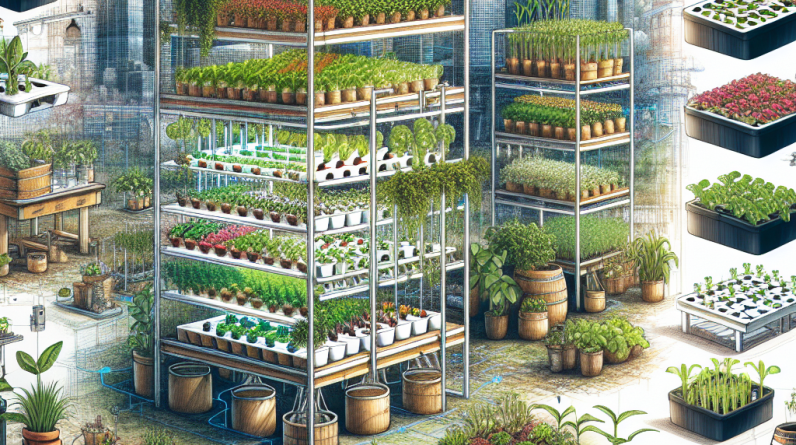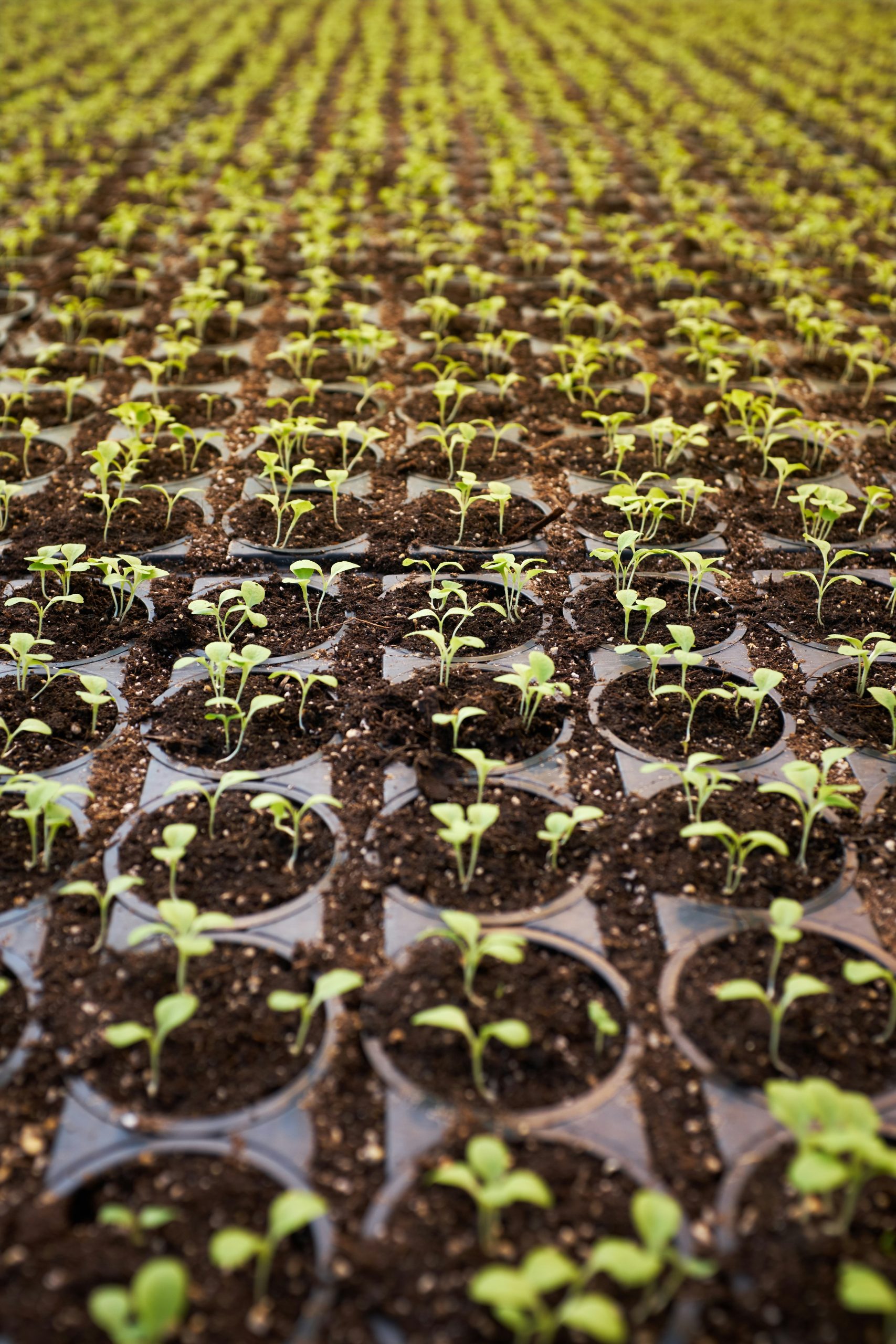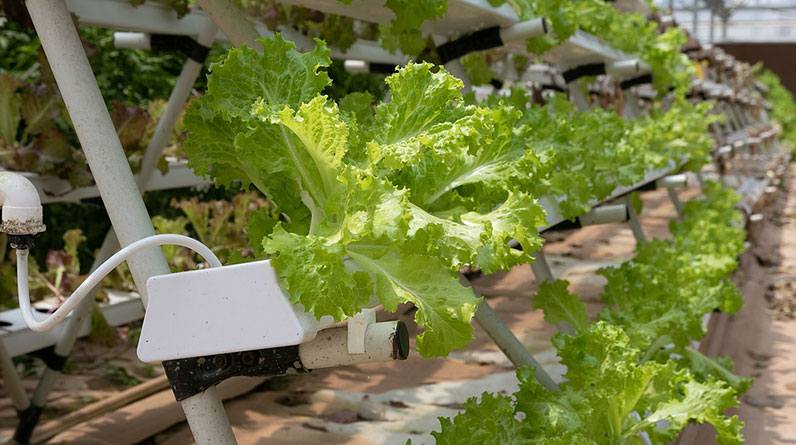
Understanding Hydroponics
What is Hydroponics?
So, I got into hydroponics because I wanted to grow fresh veggies without needing a huge yard. Hydroponics is all about growing plants in nutrient-rich water rather than soil. Trust me, it’s a game changer! Not only does it save space, but it can also yield crops faster than traditional methods.
You don’t need to be a science whiz either; it’s pretty accessible for anyone interested. There are many systems out there, ranging from simple setups for beginners to more complex ones for experienced growers. The best part? You can do it right in your apartment or any small area.
I always say, understanding hydroponics is the first step to successful farming. You gotta know your stuff so you can work with it and not against it, right?
Benefits of Hydroponic Farming
One of the coolest things about hydroponic farming is that it uses way less water than traditional farming methods. Since the water is recirculated in a closed system, there’s minimal waste. Plus, the plants absorb nutrients directly from the water, making them grow quicker and healthier.
Another win is the ability to grow just about anywhere—indoors, outdoors, on a balcony, or even in a small corner of your kitchen! I’ve seen people using shelves to stack their plants vertically, which just maximizes space.
And let’s not forget about pest control! Growing plants in a controlled environment usually means fewer pests and diseases. You have way more control over your plants, which is super satisfying.
Choosing Your Hydroponic System
When starting out, picking the right hydroponic system can feel overwhelming. There are several types—like deep water culture, nutrient film technique, and aeroponics, just to name a few. I recommend starting simple with a deep water culture since it’s user-friendly and perfect for beginners.
Take some time to research each type. There are plenty of DIY options available online if you’re feeling crafty. You can also buy ready-made systems if you want to dive right in without any hassle!
Ultimately, choose a system that fits your space and budget. The beauty of hydroponics is there’s no one-size-fits-all solution. You can adapt it to what works best for you.
Setting Up Your Hydroponic Garden
Finding the Right Space
Finding space for your hydroponic garden can be the trickiest part, especially if you’re in a small apartment like I was! Look for spots that get at least 6-8 hours of natural light, or consider investing in grow lights if you can’t. My first setup was in a sunny corner of my living room, and it turned out great!
Don’t forget about ventilation! Proper airflow is crucial for healthy plants. If you’re growing indoors, make sure you have a fan or two to keep things circulating. This helps prevent mold and keeps your plants happy.
So, assess your space and think creatively. Maybe a spare closet could turn into a mini-garden. Personalizing your setup can be a fun project that gets you more engaged with the process.
Gathering Supplies
You don’t need to break the bank to start hydroponic farming! A basic setup requires a container for your water, a growing medium (like clay pellets), nutrient solution, and your seeds or seedlings. I found a local gardening store that had everything I needed at decent prices, so do a little hunting around!
Consider checking online marketplaces too; lots of people sell used hydroponic equipment at a fraction of the original price. You might find some hidden treasures that can make your setup unique!
And if you’re feeling adventurous, why not try growing from seed? Watching them sprout and flourish is like watching magic happen right in front of your eyes!
Planting and Maintenance
Now for the fun part: planting your crops! Make sure to follow the specific instructions for the plant species you choose. There’s a bit of a learning curve, but don’t worry; you’ll get the hang of it fast! I started with herbs because they’re pretty forgiving.
Regular maintenance is key! Keep an eye on water levels, pH, and nutrient concentration. I created a little schedule for myself to check everything weekly, and it helped keep my plants thriving.
Don’t be afraid to experiment! If something seems off, tweak your conditions little by little and watch how your plants respond. Each plant has its own personality, and finding what makes them grow best can be super rewarding.
Harvesting Your Crops
When and How to Harvest
Knowing when to harvest is part science, part gut feeling. For leafy greens, you can usually start snipping off leaves within a few weeks. Tomatoes and peppers, on the other hand, should be left until they’re fully ripe. It’s all about patience, and trust me, the wait is worth it!
When harvesting, go gentle to avoid damaging the plant. Using scissors is often better than pulling off leaves, and for larger plants, try to remove just a few branches at a time. That way, the plant can keep growing for a continuous harvest.
Make sure to wash your produce before eating or cooking. Fresh hydroponic veggies are a real treat, and washing them will ensure all pests or residues are gone. Enjoy the fruits of your labor!
Storing and Using Your Produce
Once you’ve harvested, it’s time to enjoy those delicious crops! Store leafy greens in a fridge wrapped in damp paper towels to keep them fresh longer. Anything else? Just pop it in a container, and you’re good to go!
When it comes to cooking, the sky’s the limit! Fresh herbs can instantly elevate your dishes, and nothing beats the taste of homegrown tomatoes in a salad. I love experimenting with new recipes using what I’ve grown.
Plus, sharing your bounty with friends and family can bring people together in unexpected ways. Who doesn’t want to be the friend known for having the freshest ingredients on hand?
Enhancing Your Hydroponics Knowledge
Continuing Education
Hydroponic farming is an ongoing learning journey. Don’t be afraid to dive into resources like forums, blogs, and webinars. There’s a whole community of hydroponic enthusiasts willing to share their tips and experiences.
Join social media groups or local gardening clubs. I’ve met some amazing people who’ve become friends through our shared love for growing, and they’ve helped me troubleshoot issues I faced on my own journey.
Books and online courses are also fantastic ways to enhance your knowledge. The more I learned, the more confident I became in my abilities! And as technology advances, there’s always something new to consider.
Networking with Other Growers
Networking can really amp up your hydroponic farming experience. Engaging with others means more shared knowledge and resources. Plus, you can swap tips on different plants or even share your harvest.
Look into local farmers’ markets to meet others in the community. Often, you’ll find growers enthusiastic about hydroponics. I’ve encountered some of the most helpful gardeners there!
Also, don’t underestimate the power of online platforms. From Instagram to Reddit, there’s a wealth of experience waiting to be tapped into. Share your progress and ask questions; you might be surprised by how generous people can be with their insights.
Staying Inspired
Lastly, staying inspired can keep your hydroponic journey fun and fulfilling. I love following other growers on social media. Watching their successes keeps me motivated to try new things.
Create vision boards or flourishing sketches of what you’d like your garden to look like in the future. Visualizing your goals can help make them a reality.
Every time I walk past my plants, I feel a surge of pride knowing I’m cultivating my very own little garden. There’s something incredibly satisfying about it, and I hope you feel that too!
Frequently Asked Questions
What do I need to start a hydroponic garden?
To get started, you’ll need a water container, a growing medium, access to nutrients, and seeds or seedlings. Basic tools like a pH meter can also be helpful to maintain the right environment for your plants.
Can I do hydroponics in a small apartment?
Absolutely! Hydroponics is perfect for small spaces. You can set up a system on a windowsill, balcony, or even a closet. Vertical systems are a great option as they take advantage of limited space!
How often should I check my plants?
I recommend checking your hydroponic setup at least once a week. This includes monitoring water levels, checking pH, and inspecting your plants for any pests or nutrient deficiencies.
Which plants are best for hydroponics?
Leafy greens, herbs, strawberries, and tomatoes are all fantastic choices for hydroponics. They generally adapt well to hydroponic conditions and can thrive in limited space.
Can I grow fruits and vegetables year-round?
Yes, with the right lighting and indoor environment, you can grow fruits and vegetables all year long! This means fresh produce regardless of the season, a total win for any green thumb!







